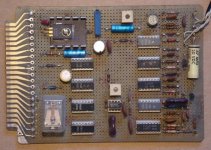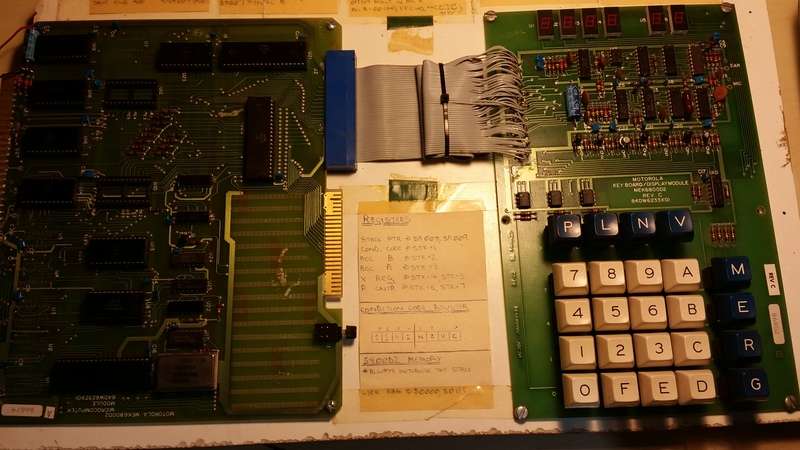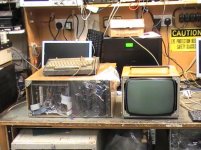I didn't know other folks were interested in keeping alive their old computers from the 70's and 80's until I discovered this forum just recently. This is my first post to this forum. I'm not sure which forum category this should be in, but here goes anyway.
Last summer I resurrected my homebrew MC6800-based computer, that I built in 1975-77, and restored it to full operation. I also resurrected and repaired my Macintosh 512K to use as the MIKBUG console terminal, running MacTerminal 2.0 and 600 baud. I last operated this computer-and-console combination in 1996. When I first built my computer I also built and used a console terminal for it, using the SWTPC CT-1024 kit, but I sold it sometime in early 80's.
I recently made a demonstration video of my MC6800/MacTerminal combo, available here. In the video you can't see the "Bit Boffer" audio cassette interface card very well, but I am kind of proud of it, so I took a photo of it, included in this post, after I made the video. I am curious if there are other folks out there who also built a "Bit Boffer" from the March 1976 BYTE magazine article, or maybe some other design.
I run the MacTerminal interface at 600 baud, with the character delay set to 2/60ths.
For MIKBUG Object format file transfer from the Mac to the M6800 I set the line delay to 2/60ths.
I use MacWrite to compose source code for the Resident Assembler.
MacTerminal response to the XON/XOFF codes is different from a paper tape reader's response, so to operate the M6800 resident assembler, MP-E, I have to set the line delay as follows
Pass 1P - 60/60ths if I know there are no coding errors
Pass 1P - 180/60ths if I don't know
Pass 2L or 2T - 150/60ths if I know there are no coding errors
Pass 2L or 2T - 180/60ths if I don't know
I also must use OPT NOGENERATE if there are FCC, FCB, FDB directives defining two or more values each.
I hope this post will be of interest to someone.
-73
Last summer I resurrected my homebrew MC6800-based computer, that I built in 1975-77, and restored it to full operation. I also resurrected and repaired my Macintosh 512K to use as the MIKBUG console terminal, running MacTerminal 2.0 and 600 baud. I last operated this computer-and-console combination in 1996. When I first built my computer I also built and used a console terminal for it, using the SWTPC CT-1024 kit, but I sold it sometime in early 80's.
I recently made a demonstration video of my MC6800/MacTerminal combo, available here. In the video you can't see the "Bit Boffer" audio cassette interface card very well, but I am kind of proud of it, so I took a photo of it, included in this post, after I made the video. I am curious if there are other folks out there who also built a "Bit Boffer" from the March 1976 BYTE magazine article, or maybe some other design.
I run the MacTerminal interface at 600 baud, with the character delay set to 2/60ths.
For MIKBUG Object format file transfer from the Mac to the M6800 I set the line delay to 2/60ths.
I use MacWrite to compose source code for the Resident Assembler.
MacTerminal response to the XON/XOFF codes is different from a paper tape reader's response, so to operate the M6800 resident assembler, MP-E, I have to set the line delay as follows
Pass 1P - 60/60ths if I know there are no coding errors
Pass 1P - 180/60ths if I don't know
Pass 2L or 2T - 150/60ths if I know there are no coding errors
Pass 2L or 2T - 180/60ths if I don't know
I also must use OPT NOGENERATE if there are FCC, FCB, FDB directives defining two or more values each.
I hope this post will be of interest to someone.
-73



